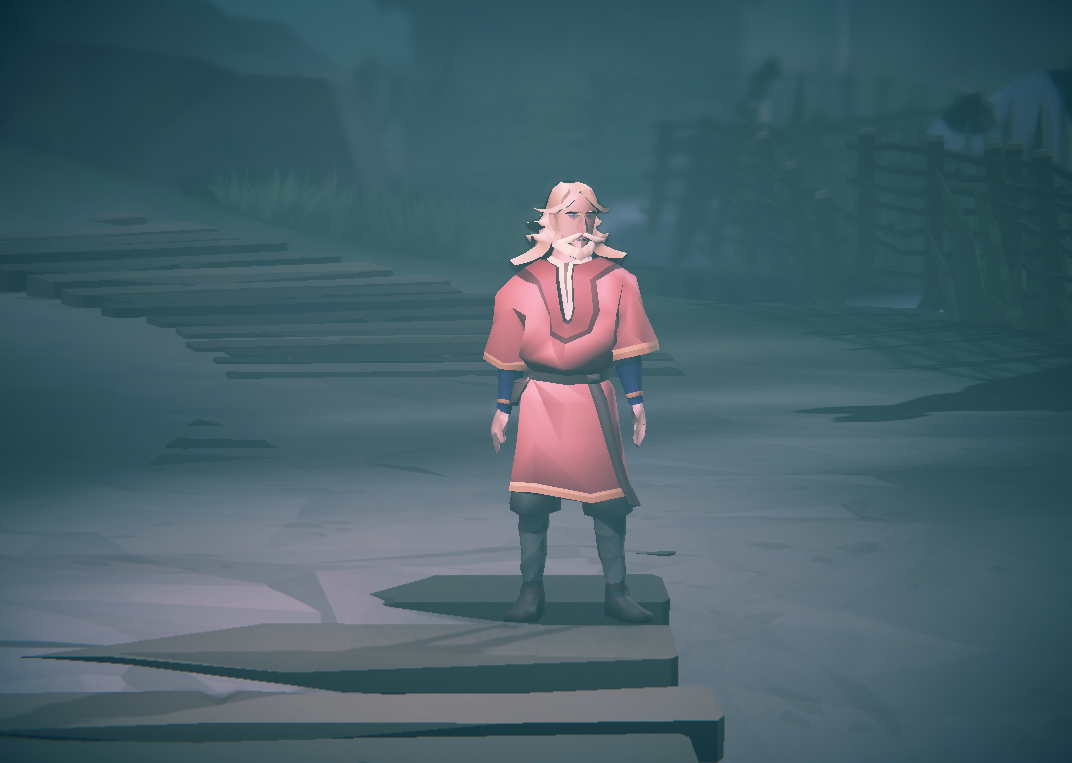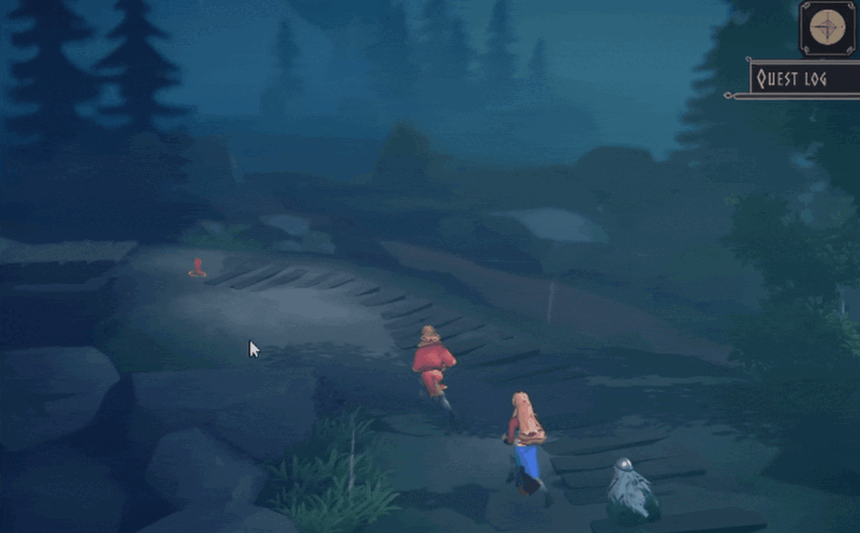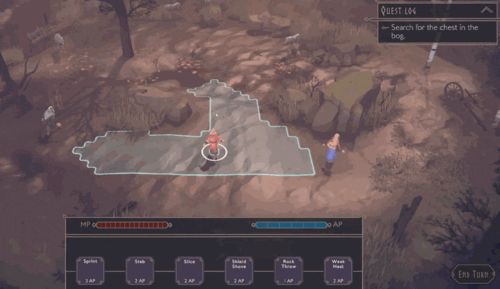Njords Embrace
Birdisland
Developer
-
Publisher
Genre
rpg
Platform
PC
Status
unreleased
Role
Lead Designer
Njords Embrace is a character-driven, roguelite RPG set during the Viking era, combining short, tactical turn-based combat with branching narrative design. The game explores themes of fate, vengeance, and moral compromise, set against a mythologically infused version of 9th–11th century Scandinavia.
Players take on the role of Oluf, a disgraced ship captain forced into exile after a violent wedding incident sparks a blood feud with the local warlord, Mord Valgardsson. As Oluf and his kin flee, they must prepare for the inevitable confrontation, either through strength, diplomacy, or divine intervention. The game balances survival systems, social interactions, and moment-to-moment moral dilemmas in a reactive world shaped by myth and kinship. During gameplay, players alternate between managing a ship and crew, navigating a regional map, and engaging in location-based encounters. Each segment offers choices with long-term narrative or mechanical consequences.
The storylines are modular and player-driven, with multiple paths to resolution. The world reacts persistently to prior actions, encouraging replay through a light meta-progression system. Each playthrough is designed for 2–3 hours, with an estimated 20 hours of total content across multiple runs. Multiple endings are possible depending on player decisions and performance.
In the world of Njords Embrace, mythology is as real as the Viking culture that gave birth to it and is fully embedded into the game world and systems. The “God Compass” is a narrative-integrated mechanic that tracks the player’s standing with various Norse gods and mythological forces based on their choices throughout the game.
Each decision—whether moral, strategic, or relational—shifts the player’s alignment with specific deities. This alignment is not just narrative flavor: it directly impacts gameplay by granting (or withholding) powerful blessings.
Importantly, favoring one god can alienate others, introducing risk-reward tension and long-term consequences. The God Compass allows players to see these shifting relationships, making the mythological layer an active system rather than passive lore. This mechanic serves as a bridge between narrative choice and gameplay effect, encouraging players to consider both immediate needs and mythic allegiances.
Combats are short, turn-based, and focus on positioning and consequence over grind, with permanent effects on the party and story state.
The combat system is partially shared between Njords Embrace and The Long Night, since both games were developed simultaneously. Sharing the foundation of a stat- and grid-based system, typical for many western RPGs, Njords Embrace focuses on combinatorial depth and straightforward, easy-to-understand abilities and effects.
Equipment can be swapped between the numerous companions the player invites to be part of their crew. Each crew member has different base stats, such as health, force, or movement points, and therefore is more suitable for specific weapons or positions on the battlefield, but their specific loadout is up to the player, creating a layer of strategic depth.
I began this project as the sole designer, responsible for all design aspects until another designer joined a couple of months into development. Collaborating closely with game direction, I helped define the game’s core design and identity, building on earlier RPG prototypes to refine our approach to traditional grid-based systems.
My key responsibilities included designing the combat system through extensive paper prototyping, iterating on the stat-based equipment system, and improving our internal tool for generating in-game content from table data. I also led UI/UX efforts, managing the pipeline and implementing UI directly in-engine, designed custom UI elements to support gameplay mechanics, and supported tech art by creating particle effects and shaders.
A unique challenge was the simultaneous development of two similar titles, requiring constant context-switching and adapting shared systems to suit different gameplay goals.










